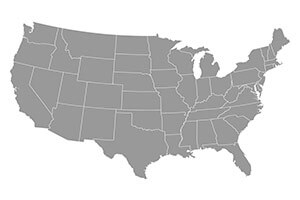
Drought here, excessive rainfall there — it’s always amazing to see the differences between states, and even within states. Most of our weather news is disaster-related (go figure), and this year most of our disasters were floods. Yet some areas would have loved to have a little of that rain. Read on:
Northeast
New Hampshire continued to buck the trend, with too little rain causing nectar plants to dry up. Late-summer goldenrod and asters were not enough to salvage a substandard honey flow.
New York’s season continued to be a couple of weeks behind schedule, but moisture from all that spring rain made for a good late-summer flow from knapweed, Japanese knotweed, sumac, goldenrod and asters. Unfortunately, parts of the state saw an uptick in American foulbrood cases.
There’s still too much rain in Pennsylvania, resulting in a drop in production over last year, but also leading to increased honey prices locally. Late-season goldenrod, asters and knotweed helped to make up some of the difference. There was a high incidence of swarming in late July and August.
Maine saw significant honey increases over last year, led in late summer by goldenrod and Himalayan balsam.
Mideast
Heavy June rainfall reduced Kentucky’s clover flow, and an ensuing drought and high temperatures knocked back fall nectar supplies. Goldenrod, tall asters and wild touch-me-nots were all affected. But tallow was a good producer in the eastern part of the state with one correspondent reporting 80 lbs. per hive on 400 hives from this source.
Tennessee reports a slight increase in crops over last year. Sumac and early goldenrod led the way. Light sourwood honey is in demand, driving a higher price.
Southeast
Florida’s crop is down slightly due to dry, hot weather. Cabbage palm and melaleuca led the light summer flow, and Brazilian pepper was expected to be a leading fall crop. Prices for orange blossom honey have fallen, as packers appear to be well-stocked.
Hot, dry weather and an abundance of swarms reduced production in Alabama. Late summer crops were led by goldenrod (which bloomed later than usual), peppers and cotton.
Peppers, cotton and flat-top goldenrod led the way in Georgia, where output appears to be up by around 40 percent over last year.
Southwest
Weather has been good overall in Louisiana, and crops are now looking to be about 90 percent of last year’s.
New Mexico’s crop looks to be about 75% of last year’s. But there’s high demand for local honey, and good mountain snow was of benefit. Russian knapweed and rabbitbrush were top late-season crops.
In northern Texas, the weather has been dry, but local honey is up to $10.00/lb., compared to $7.00 just two years ago. The State Fair in Dallas sets a good benchmark for the area.
East Central
After a slow start, Wisconsin honey production has improved, with our east-central reporter projecting a 50 percent increase over last year’s crop.
Northeastern Illinois reports that overall production is way down — perhaps 60 percent of normal, following 50 percent of normal last year. Worse, summer losses ran about 20 percent, and bees in some cases were “in winter mode” already in August, due to nutritional stress.
And there were other anomalies: “We got light honey, water white,” not seen in 20 years of beekeeping in the area. And, “We had a honey flow in July … our normal dearth.” Goldenrod is contributing to a decent fall flow, the first in five years.
Southeastern Illinois sees production similar to last year’s, with goldenrod and asters leading the fall flow. Local festival sales are performing well.
Northern Indiana saw excessive rain from April through early July, knocking the honey crop back to an estimated 75 percent of last year’s. The western side of the state is looking better, at about a 20 percent
increase.
West Central
After a quick start, the Nebraska crop is down slightly, but still looks to be about average.
Crops have been above average in eastern Kansas, while the central and southwestern parts of the state were down a little. Lots of rain throughout the spring, followed by a dry summer, made for a rollercoaster year. Alfalfa and sunflower led things in the summer, followed by goldenrod and smartweed in the fall.
Southern Iowa predicts production about the same as last year. Spring was hurt by excessive rain, but clover and late-planted soybeans made for a good summer crop. In the northeast part of the state, the crop should be up slightly after the early season was mostly washed out. Black locust, like basswood before it, turned brown almost as soon as it opened. But the white Dutch clover responded very well to all that ground moisture. Prices to small packers are about $2.10/lb. (accepting delayed payment helps), while the large packers are offering $1.60/lb., similar to large-quantity imports from Canada and Argentina.
An Iowa reporter places bees on Amish farms where organic produce is grown; the owners want the ….


